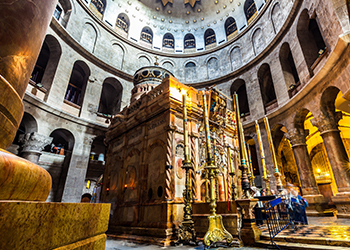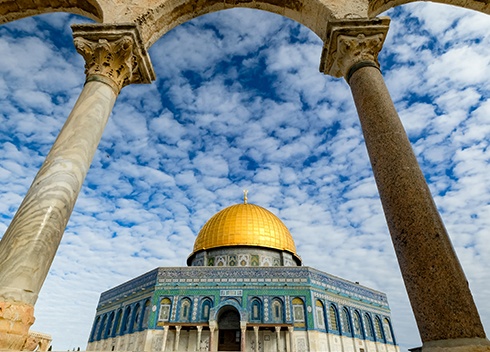
Visit Palestine, with us!
BAIT AL MUQADDAS (بيت المقدس)
Masjid al-Aqsa, also known as the Farthest Mosque, holds significant importance in Islam as the third most sacred place. Its name signifies its distant location and historical relevance. Muslims regard it as the place where Prophet Muhammed (PBUH) embarked on his remarkable night journey from Makkah to Jerusalem, riding on the celestial creature known as Buraq.
This iconic mosque, Masjid al-Aqsa, carries immense significance. Prophet Muhammed (PBUH) frequently emphasized its virtues to the Sahabah (Companions), urging them to appreciate its exceptional qualities. Here are several reasons why Masjid al-Aqsa holds a special place in the hearts of believers:
The First Qiblah: Masjid al-Aqsa was initially designated as the direction of prayer (qiblah) for Muslims before it was changed to the Ka’bah in Makkah.
The Station of Al-Isra and Al-Mi’raj: It is the very site from which the Prophet (PBUH) embarked on his miraculous night journey to the heavens, an event known as Al-Isra and Al-Mi’raj.
The Second House of Allah: It stands as the second sanctuary constructed on Earth, signifying its deep connection with divine worship.
The Burial Place of Numerous Messengers: Many Messengers of Allah (swt) are believed to be buried within its sacred grounds, adding to its historical and spiritual significance.
The Resting Place of Several Sahabah: Several revered Sahabah, the Prophet’s companions, find their final resting place within the precincts of Masjid al-Aqsa.
Witness to Miracles: Throughout history, Allah (swt) has demonstrated His divine power through various miracles that occurred within the vicinity of Masjid al-Aqsa.
A Blessed Place: The Almighty Himself refers to Masjid al-Aqsa as a blessed place, highlighting its sacred nature.
The only Masjid mentioned by name in the Quran apart from the Ka’bah.
NOW TAKING BOOKINGS FOR AL AQSA 2023
EDUCATIONAL, SPIRITUAL ALL INCLUSIVE AFFORDABLE PACKAGE
Third Holy Mosque
AL AQSA PACKAGE
3 Nights half board | ✓ |
Meet & Assit | ✓ |
St. Georges / Holiland hotel or Similar | ✓ |
All round ground transport | ✓ |
Ziyarats in & around Jerusalem | ✓ |
Educational Talks | ✓ |
Accompained by Sheikh | ✓ |
CALL US
+91-9622666667
£445
CALL US
+91-9622666667
£445
- Direct flights starting from £250.00
- Child rate half price
- Above rates per person
- Option to extend to Jordon and or Umrah
- Must hold British or European passport valid for at least 6 months from date of travel
- Al-Amanah Hajj & Umrah does not guarantee entry into Israel. This is at the desecration of the authorities at Allenby bridge border & Tel Aviv Airport
- List Item
Tailor made packages to fulfil all your needs and desires contact us for a no obligation quote
- COVID PROTOCOL MUST BE FOLLOWED THROUGHOUT JOURNEY| TRAVELER MUST BE FULLY VACCINATED (WITH CERTIFICATE) | PCR NEGATIVE TEST MAYBE REQUIRED | TRAVEL INSURANCE ( WITH COVID COVER) REQUIRED
Watch the footage of one of the visits of alamanah hajj & umrah to al-aqsa
Watch the footage of al-aqsa visit of alamanah hajj & umrah in 2017
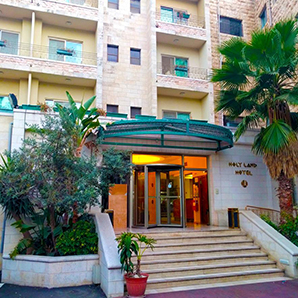
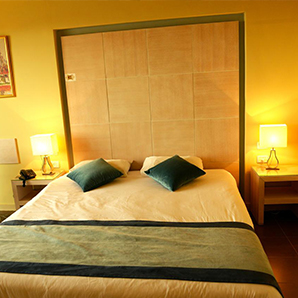
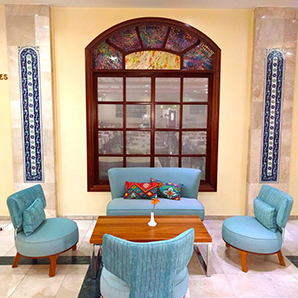
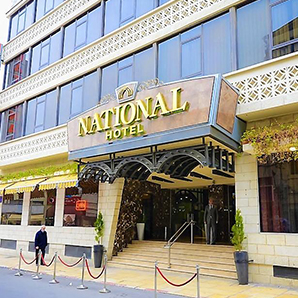
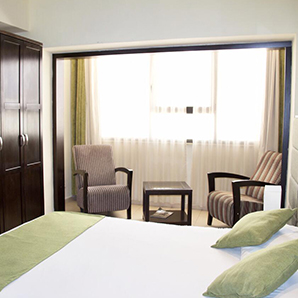
SAMPLE PACKAGES
2 nights Jerusalem
From £299
2 nights Jerusalem
From £299
2 nights Jerusalem & 2 nights Amman
From £399
2 nights Jerusalem & 2 nights Amman
From £399
3 Nights Amman & 2 nights Jerusalem
From £500
3 Nights Amman & 2 nights Jerusalem
From £500
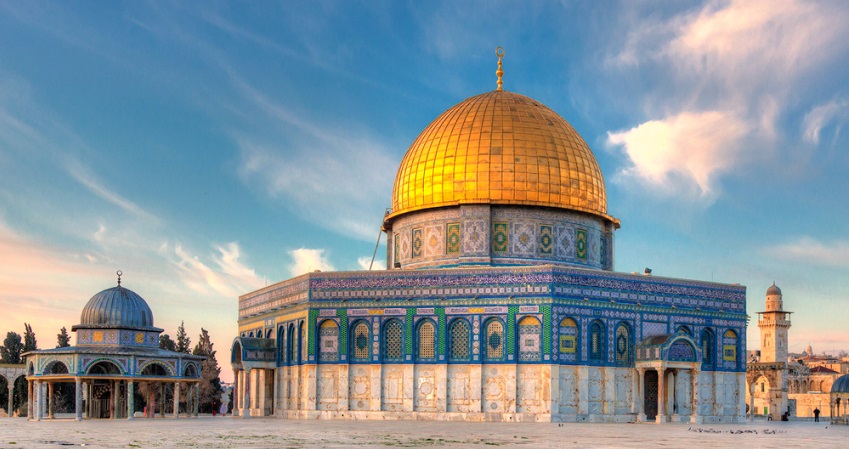
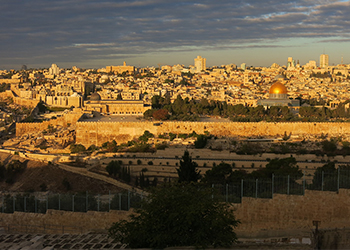
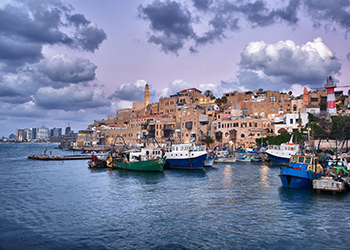
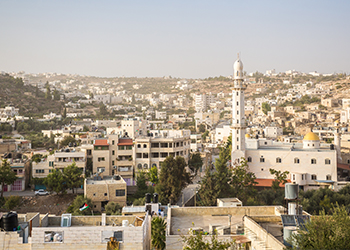
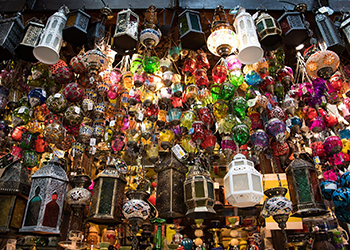
ZIYARATS IN & AROUND JERUSALEM
Jerusalem, situated to the west of the Dead Sea, is a city in the Middle East that has served as a revered place of worship for Muslims since ancient times. The Old City of Jerusalem encompasses a remarkable collection of religious sites, prominently featuring the Temple Mount compound. Within this compound, you can find revered landmarks such as the Western Wall, a significant site for prayer and reflection, and the Dome of the Rock, a magnificent Islamic shrine dating back to the 7th century, distinguished by its iconic golden dome.
MASJID AL AQSA (المسجد الأقصى)
Masjid Al-Aqsa, also known as Bayt al-Muqaddas, holds immense significance as the third holiest site in Islam and is situated within the Old City of Jerusalem. Previously, the entire area encompassing the silver-domed mosque, along with the Dome of the Rock, the seventeen gates, and four minarets, was referred to as the Al-Aqsa Mosque. However, today a more distinct distinction is made, with the broader compound commonly known as al-Haram ash-Sharif, meaning “the Noble Sanctuary,” or the Temple Mount, which holds the utmost sanctity in Judaism.
According to Islamic belief, it is understood that Prophet Muhammad (PBUH) was transported from the Sacred Mosque in Makkah to Masjid Al-Aqsa during the Night Journey. Initially, Muslims faced prayers in the direction of this site until the seventeenth month after the migration, when Allah (SWT) commanded a change in the direction of prayer towards the Kaaba.
Originally, the mosque was a modest prayer house constructed by the Rashidun caliph Umar. However, it was later reconstructed and expanded by the Umayyad caliph Abd al-Malik and completed by his son al-Walid in 705 CE. Unfortunately, an earthquake in 746 caused extensive destruction to the mosque, which was subsequently rebuilt by the Abbasid caliph al-Mansur in 754. His successor, al-Mahdi, undertook further renovations in 780. Another earthquake struck in 1033, resulting in the majority of Masjid Al-Aqsa being demolished. Two years later, the Fatimid caliph Ali az-Zahir constructed the mosque that stands before us today, a true blessing to behold.
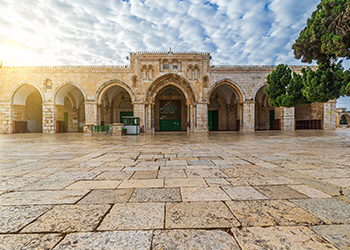
AL MARWAN MOSQUE (جامع ابن مروان)
The Marwan-e-Masjid is an underground prayer space situated on the south-eastern side of the al-Aqsa compound. Recently, efforts have been made to restore this area. During the Crusader era, when they had control of the mosque, this space was utilized as stables for their horses, eventually becoming known as Solomon’s stables.
While traditionally referred to as ‘Solomon’s stables,’ the original structure is unlikely to date back to the time of Prophet Sulaiman (peace be upon him). It is more plausible to attribute it to Herod the Great, who significantly expanded the Temple Mount platform during his reign.
Many of the columns in this area bear holes that were created by the Crusaders to pass ropes for tethering their horses. It is estimated that at one point, around 400 horses were housed here.
According to Islamic history, a caliph named Marwan I is credited with transforming these vaults into a series of usable rooms, rather than simply excavating down to the bedrock. The initial intention for this location was to establish a mosque, which is now known as the Marwani Mosque. In 1996, the Palestinian Waqf converted the area, which had largely remained empty during the Crusader period, into a modern mosque capable of accommodating up to 7,000 worshippers.
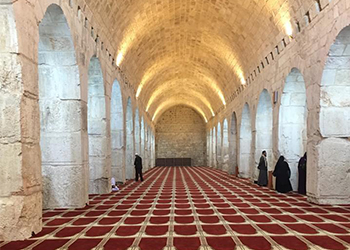
DOME OF THE ROCK (QUBBAT AS SAKHRAH) (قبة الصخرة)
Situated in Jerusalem, the Dome of the Rock is an extraordinary 7th-century edifice. It serves as a shrine that enshrines the rock believed to be the site from which Prophet Muḥammad (PBUH) ascended to heaven. This iconic structure is a magnificent example of Islamic architecture and holds the distinction of being the first-ever domed shrine constructed.
The remarkable design of the Dome of the Rock showcases Byzantine influences, characterized by its octagonal layout and a wooden rotunda dome. The exterior is adorned with Persian tiles, while the interior features exquisite marble slabs that were added by Suleiman I in 1561.
The site’s significance originates from the religious traditions surrounding the rock at its core, known as the Foundation Stone. This stone holds profound importance for both Jews and Muslims, representing the place where Abraham attempted to sacrifice his son (Isaac according to Genesis 22:2, and Ishmael according to Islamic belief).
Recognized as “Jerusalem’s most recognizable landmark,” the Dome of the Rock is designated as a UNESCO World Heritage Site. It shares this prestigious status with two neighboring structures on the Temple Mount: the Western Wall and the “Resurrection Rotunda” within the nearby Church of the Holy Sepulchre.
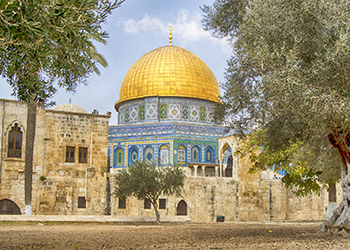
HASAN BEIK MOSQUE (مسجد حسن بيك)
Situated in Jaffa, also known as the Hasan Bey Mosque, this mosque holds significant prominence as one of the most renowned mosques in the city. Jaffa, now part of the Tel Aviv-Yafo municipality in Israel, witnessed the construction of the Hassan Bek Mosque in 1916. It was commissioned by Hasan Bey, the Turkish-Arab governor of Jaffa during that period.
Hassan Bey, the governor of Jaffa who initiated the construction, was responsible for the mosque’s establishment. His tenure in Jaffa lasted from August 1914 to May 1916. The mosque was built on a parcel of land that had been selected and confiscated by Hassan Bey from its Arab Christian owner, which he then registered under his own name. Under his orders, construction materials were obtained by looting from nearby construction sites, while the workforce primarily consisted of individuals, predominantly Muslims, who were forcibly taken from the streets.
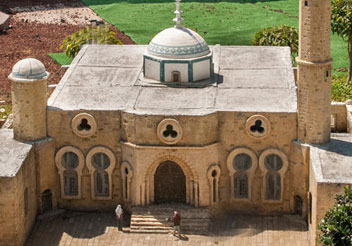
JAFFA (يافا)
Jaffa, also known as Japho or Joppa, is a historic port city located in the southern and oldest part of Tel Aviv, Israel. It holds a significant place in ancient history and is renowned for its connections to biblical tales involving figures such as Jonah, Solomon, and Saint Peter, as well as the mythological story of Andromeda and Perseus.
The tell, or archaeological mound, of Jaffa stands at an impressive height of 40 meters (130 ft), offering a wide-ranging view of the coastline. This elevated position granted it strategic importance throughout military history. Over the centuries, the accumulation of debris and landfill further raised the hill’s elevation. Archaeological findings indicate that Jaffa was inhabited as early as 7500 BCE. The city is mentioned in an Ancient Egyptian letter dating back to 1440 BCE, which glorifies its conquest by Pharaoh Thutmose III. In an interesting tactic, the pharaoh’s general, Djehuty, concealed armed Egyptian warriors within large baskets and presented them as gifts to the governor of the Canaanite city.

AL MAHMOUDIEH MOSQUE (مسجد المحمودية)
The largest and most significant mosque in Jaffa, now part of Tel Aviv, is a complex of buildings constructed during the 18th and 19th centuries under Ottoman rule. The Mahmoudiya Mosque, attributed to Governor Sheikh Muhammad al-Khalili and later expanded by Muhammad Abu-Nabbut, features two courtyards, a prayer hall with shallow domes, and a slender minaret. It is built on the foundations of an earlier mosque and incorporates Roman columns from Caesarea and Ashkelon.
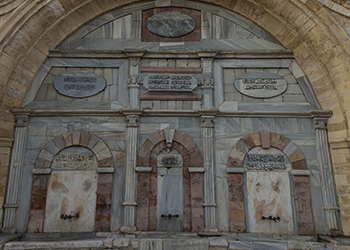
OMAR BIN AL-KHATTAB MOSQUE (مسجد عمر بن الخطاب)
Named after Omar ibn al-Khattab, the second Rashidun Caliph, the Omar Mosque in Bethlehem holds historical significance. It is said that Omar visited Bethlehem in 637 CE and issued a law to protect the shrine and ensure safety for Christians and clergy. The mosque itself was built in 1860, renovated in 1955 during Jordanian control, and sits on land donated by the Greek Orthodox Church. In the past, both Muslims and Christians would contribute olive oil to illuminate the surroundings of the mosque, reflecting the spirit of religious coexistence in Bethlehem. The mosque’s construction started in 1730 under Governor Sheikh Muhammad al-Khalili, with a notable sabil (fountain) attributed to Sulayman Pasha. The majority of the mosque, including the main courtyard, arcades, rectangular prayer hall with shallow domes, and slender minaret, was built in 1812 by Ottoman Governor Muhammad Abu-Nabbut. It was constructed on the foundations of a smaller mosque previously owned by the Bibi family of Jaffa and still features Roman columns from Caesarea and Ashkelon.
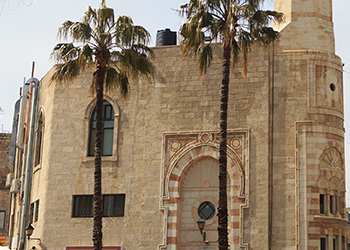
HEBRON (الخليل)
Hebron, a Palestinian city in the southern West Bank, holds a significant position as a bustling trade hub and contributes a substantial portion of the region’s GDP, particularly through the sale of marble from local quarries. Situated in the Judaean Mountains at an elevation of 930 meters, Hebron is renowned for its agricultural products like grapes and figs, as well as its limestone, pottery workshops, and glassblowing factories. The city’s old quarter is characterized by its narrow streets, stone houses with flat roofs, and bustling bazaars. Notably, Hebron is home to Hebron University and the Palestine Polytechnic University. The city of Hebron encompasses ad-Dhahiriya, Dura, Yatta, and nearby villages, making it the largest Palestinian governorate with a population of 600,364 (2010).

AL HARAM AL IBRAHIMI (الحرم الإبراهيمي)
Al Haram Al-Ibrahimi, also known as the Sanctuary of Abraham or Tomb of the Patriarchs, holds great significance in Islam as the fourth holiest site. Situated in Hebron, this ancient mosque, estimated to be around 1000 years old, is a sacred place housing the tombs of Prophets Abraham, Isaac, Jacob, and their wives. According to Islamic tradition, Prophet Muhammad visited this site during his miraculous night journey from Makkah to Jerusalem. The structure has undergone various transformations throughout history, transitioning from a cave to the monumental complex it is today, and serving as a church, mosque, and synagogue at different times. Additionally, it contains maqams (shrines) dedicated to figures like Siti Sara, Siti Rifkah, Siti Leah, Sidi Yousef, and Sidi Ibrahim.
Legend attributes the construction of the massive stone walls, laid without mortar, to King Solomon with the assistance of genies or spirits. However, the architectural style and craftsmanship indicate the influence of Herod the Great, particularly in the walls and pavements. The Haram’s impressive stature, featuring a parallelogram shape measuring 65 meters in length and 35 meters in width, comprises large drafted ashlars reminiscent of those found in Al-Haram El-Sharif in Jerusalem. Standing at 15 meters high, it showcases the work of Herod, while the crenellated upper part of the wall reflects the Mamluk era. Although originally surrounded by four square minarets, only those at the northeast and northwest corners remain today. This remarkable ancient monument stands as a testament to the rich history and architectural splendor of Hebron and the wider region.
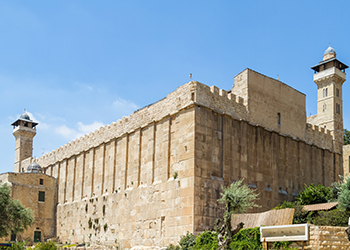
NATIVITY CHURCH (كنيسة المهد)
The Nativity Church in Bethlehem, West Bank, is famous as the birthplace of Prophet Issa (Jesus). Commissioned by Constantine the Great in 327, the basilica was built over the traditional site believed to be Jesus’ birth cave. The original basilica was completed in 339 but destroyed during the Samaritan Revolts. It was rebuilt by Byzantine Emperor Justinian in 565, preserving the original style. The Church of the Nativity holds religious significance for Christians and Muslims alike. It is a UNESCO World Heritage Site, listed as the first site in Palestine, and is also on UNESCO’s List of World Heritage in Danger.
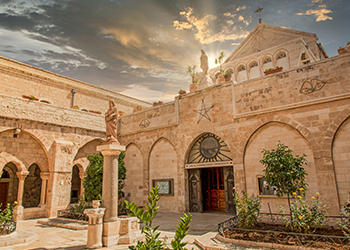
MOUNT. OF OLIVES (جبل. الزيتون)
The Mount of Olives, east of Jerusalem’s Old City, gets its name from the olive groves that once covered it. It offers a panoramic view of the Old City and has historical significance as the Silwan necropolis and a Jewish cemetery for over 3,000 years. Many important events in the life of Jesus occurred here, and it is where he ascended to heaven according to the Acts of the Apostles. The Mount is revered by Christians and is a popular pilgrimage site. It is part of a larger mountain ridge that includes Mount Scopus and the Mount of Corruption, with At-Tur being its highest point. The ridge serves as a watershed and marks the beginning of the Judean Desert.

MAQAM RABAA AL-ADAWIYAH (مقام رابعة العدوية)
Rābiʻa, a woman born in Basra, Iraq between 714 and 718 CE, was a renowned figure in Islamic history. While there are no written accounts from her, her early life has been recounted by later Sufi saint and poet, Faridud-Din Attar. Despite her impoverished background, Rābiʻa was known for her exceptional virtue and piety. She gained fame for her devotion, including performing a thousand ritual prostrations during the day and night. When asked about her motivation, she expressed that she sought no personal reward, but rather hoped to bring joy to the Prophet Muhammad on the day of Resurrection and to inspire other prophets with her accomplishments.
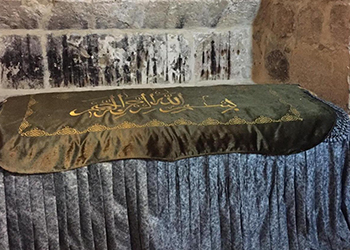
MAQAM SALMAN AL-FARSI (مقام سلمان الفارسي)
Salman the Persian, originally named Rouzbeh, holds significance as a companion of the Prophet Muhammad and was the first Persian to embrace Islam. His spiritual journey involved being raised as a Zoroastrian, exploring Christianity, and ultimately finding faith in Islam after meeting the Prophet in the city of Yathrib (Medina). Known as Abu Abdullah in his later years, Salman played a pivotal role in the Battle of the Trench, suggesting the idea of digging a defensive trench around Medina. He later served as the governor of Al-Mada’in in Iraq and became a prominent follower of Ali ibn Abi Talib. In Shia tradition, Salman is considered part of the Prophet’s household. Salman was born in either Kazerun or Isfahan in Persia and initially pursued studies to become a Zoroastrian magus. However, he was deeply influenced by a Nestorian Christian group and chose to join them, despite facing opposition from his family who subsequently imprisoned him before his escape.
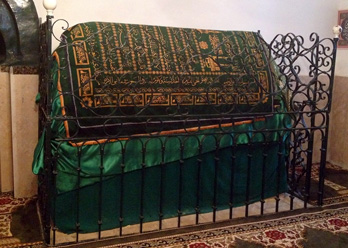
WAILING WALL (ALBURAQ) (حائط البراق)
The Western Wall, previously known as the Wailing Wall, holds immense religious significance for Jews, who consider it to be the sole remaining structure of the Herodian temple. For Muslims, this wall is known as the Buraq Wall, as it is believed to be the place where Prophet Muhammad tied the Buraq during his Night of Ascension. The current plaza where the wall stands was once residential housing known as the Maghribi Quarter. Al-Afdal, the brother of Salahuddin Ayyubi, endowed this area to provide aid and services for North African pilgrims and the poor. He also established a madrasah for teaching the Maliki school of jurisprudence. During the Mamluk period, madaris were built along most of the wall, except for a section between the Street of the Chain and the Maghribi Gate.
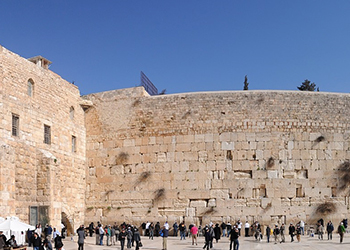
OLD CITY OF JERUSALEM (البلدة القديمة في القدس)
The Old City of Jerusalem is a walled area spanning 0.9 square kilometers within the modern city. Historically, it encompassed the entirety of Jerusalem until the establishment of the Jewish neighborhood Mishkenot Sha’ananim in 1860. The Old City is revered by different religious groups for its significant sites, including the Dome of the Rock and al-Aqsa Mosque for Muslims, the Temple Mount and Western Wall for Jews, and the Church of the Holy Sepulchre for Christians. It was designated as a UNESCO World Heritage Site in 1981. The Old City is currently divided into four quarters: Muslim, Christian, Armenian, and Jewish. The monumental defensive walls and city gates were constructed between 1535 and 1542 by Suleiman the Magnificent. Today, the majority of the Old City’s population resides in the Muslim and Christian quarters.
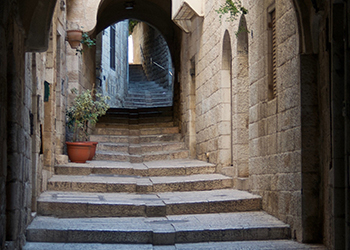
OLD MARKETS (الأسواق القديمة)
The Suq, located in Jerusalem’s Old City, is a vibrant marketplace that attracts both locals and tourists. With over 250 vendors, it offers a wide range of products including fresh fruits, vegetables, baked goods, fish, meat, cheeses, nuts, spices, clothing, shoes, housewares, and textiles. Food markets within the Suq serve popular dishes like falafel, shawarma, kibbeh, kebab, shashlik, kanafeh, baklava, halva, zalabiya, and Jerusalem mixed grill. The marketplace is a lively and colorful scene, with vendors calling out prices and creating a bustling atmosphere. On Thursdays and Fridays, shoppers gather to stock up for Shabbat before the market closes for the Sabbath, signaled by the bugle sounding on Friday afternoon. The Old City is divided into the Muslim, Christian, Armenian, and Jewish Quarters, with its monumental defensive walls and city gates constructed by Suleiman the Magnificent between 1535 and 1542. Presently, the majority of the Old City’s population resides in the Muslim and Christian quarters.

HOLY SEPULCHRE CHURCH (كنيسة القبر المقدس)
The Church of the Holy Sepulchre is located in the Christian Quarter of the Old City of Jerusalem, near the Muristan. Believed to have originated in the fourth century, the church is considered one of the most significant sites in Christianity. It encompasses two revered locations: Calvary, where Jesus was crucified, and the empty tomb where he was buried and resurrected. The tomb is enclosed by the Edicule, an 18th-century shrine.
Since its establishment, the Church of the Holy Sepulchre has been a significant pilgrimage destination for Christians. It is known by its Greek name, Church of the Anastasis, which refers to the Resurrection of Christ. The complex surrounding the church has evolved over the centuries and now serves as the headquarters of the Greek Orthodox Patriarch of Jerusalem. The control and management of the church itself are shared among various Christian denominations and secular entities, following complex arrangements that have remained largely unchanged for over 160 years, and some even longer.
